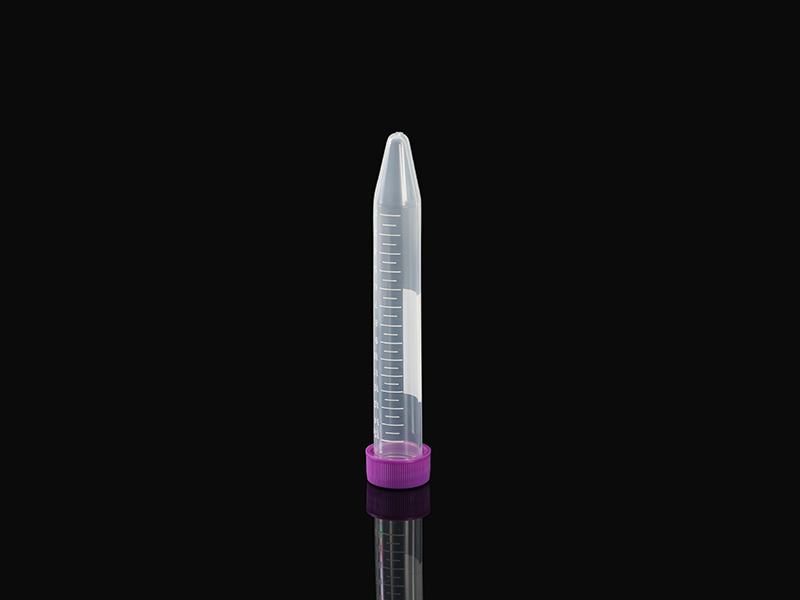If you're looking for a high-quality centrifuge tube, make sure to choose one that's made of polypropylene. These plastic tubes are resistant to most chemical reagents and autoclavable at 121degC. They feature precise graduation markings and are molded with precision to prevent cross-threading. These centrifuge tubes are also made with high-density polyethylene and have a touch-free manufacturing process. They're ideal for large-scale centrifugation, where high-quality materials make it an excellent choice.

If you need to isolate and sort samples, a microcentrifuge storage box is an easy solution. This storage box is made of polypropylene and includes alpha-numeric reference guides for easy identification of tubes. A graphic on the front of the box illustrates the alpha-numeric grid printed in reverse. When viewed from the top, the grid is visible through the box. A black box does not feature this feature.
If you plan to use the centrifuge tube repeatedly, choose the highest quality models available. Single-use centrifuge tubes are manufactured in Class 10,000 clean rooms and are certified free from RNase, DNase, Human DNA, Pyrogen, and PCR inhibitors. Centrifuge tubes are resistant to a wide range of temperatures and chemicals. Make sure to dry the centrifuge tube thoroughly before storing it. Always keep your centrifuge tubes away from chemical fumes.
The PYREX(r) conical centrifuge tube is designed for petroleum products testing. Its white enamel graduations increase the strength of the centrifuge tube by preventing failure-causing stress regions. They come in a wide range of sizes and are available in matched sets of six. Some centrifuge tubes do not contain a stopper. In case you are not sure of the amount of oil in a particular centrifuge, read the label carefully.
Apart from its high-quality, glass centrifuge tubes have a variety of advantages. They can withstand higher temperatures than plastic tubes. Plastic tubes are easier to clean and more affordable. They are also easier to sterilize and can withstand corrosive chemicals. Apart from being more expensive, glass centrifuge tubes have certain disadvantages. For example, they are not ideal for microcentrifuges, and they can leak.
When used properly, a Centrifuge Tube can effectively separate solid particles from liquids and vice versa. Centrifugation is an important technique in biological analysis. However, the use of a Centrifuge Tube is not limited to separating liquids from solids. It is useful in a wide range of applications. The PFAS analysis process involves the use of a centrifuge tube, and different types of this instrument are suitable for different kinds of analysis.
The most basic requirement for centrifuge tubes is to be balanced. The maximum speed of the centrifuge rotor is around 1500rpm. When the centrifuge is filled with different types of samples, the centrifuge will not have the correct balance, resulting in uneven rotation and even sample waste. The centrifuge may even break due to uneven distribution of samples in the tube. If these factors are not met, the centrifuge will not work properly, and can cause damage to the samples or even personal injury.
The centrifuge tube's speed is determined by the relative centrifugal force applied to the fluid. The speed of a tube varies greatly between brands. Before purchasing a centrifuge tube, make sure you know how many RPMs you need. If possible, look for an RCF speed rating instead of RPM, which only takes into account the rotor's rotational speed. That way, you'll be able to see what the tube can do before you spend any money.
A centrifuge tube is a cylinder-shaped container that holds liquid samples during centrifugation. It has a conical bottom to separate the heavier portions of the sample from the liquid. The tube also needs to be strong enough to withstand the centrifugal force, and its specifications will likely tell you how fast it can spin. This is why a conical-bottomed centrifuge tube is a vital piece of equipment for scientists and researchers.
Centrifuge tubes are indispensable for any lab, whether it's a research laboratory or an industrial plant. These tubes allow scientists to separate components of mixtures by their density. They are also used for purification of viruses, cells, proteins, nucleic acids, and organelles. They're a constant and ever-present part of many labs around the world. You can't get away without a centrifuge tube.
It's crucial to balance your centrifuge tubes. If you use two different tubes with varying densities, your results won't be precise. Try to find two centrifuge tubes of equal volume that are placed opposite one another. If you have a single sample in one tube, you can balance the tube by filling the second with water the same volume as the first one. You can also use a second tube of the same size to balance the tubes.

 简体中文
简体中文











